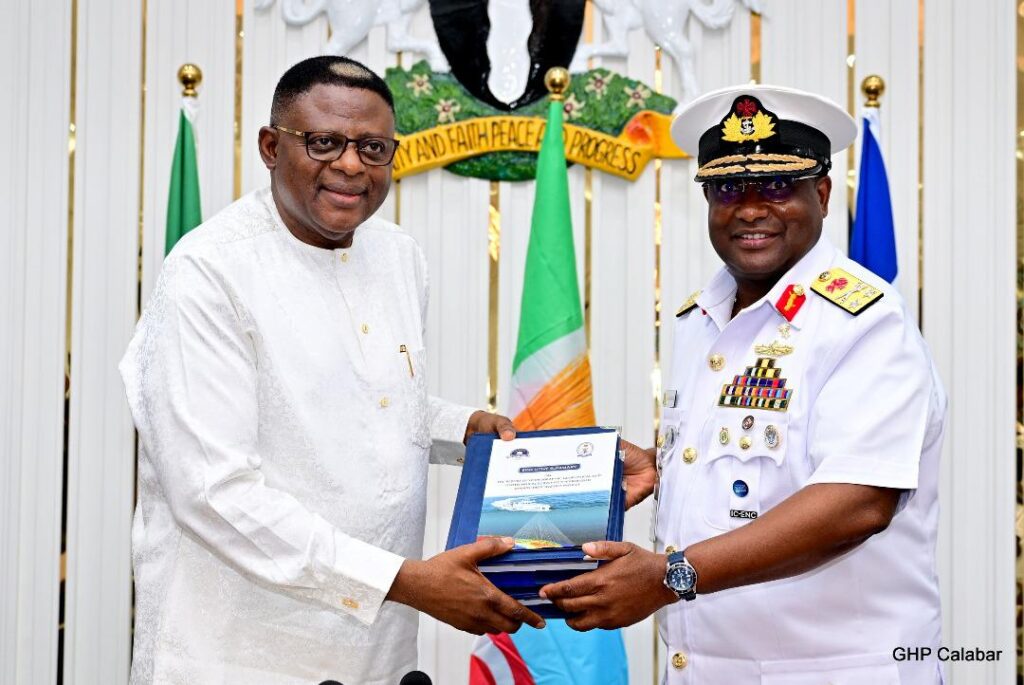By Aniekan Aniekan, Calabar
The Cross River State government has taken another major step towards actualising its Bakassi Deep Seaport Project.
This follows the official presentation of the Hydrographic, Geotechnical, and Geophysical Report and New Navigational Chart for the project.
Speaking while receiving the document at the State Executive Council Chambers, the Cross River State governor, Senator Bassey Otu, described the event as a “historic milestone”.
He emphasised that the document not only affirms Nigeria’s maritime boundaries but also sets the stage for an economic revolution across the Gulf of Guinea.
“This is truly a historic day, not just for Cross River State but for the entire country. What we have achieved today replaces charts dating back to 1903 and settles long-standing debates about Cross River’s status as a littoral state. This chart clearly affirms our coastal status.
“When we connect this with the ongoing coastal highway, we’re looking at a completely different city. The economic potential is enormous,” Governor Otu said.
Governor Otu also said the updated maritime chart now aligns with S-100 international standards, positioning Cross River for deepwater commerce and international shipping operations.
Governor Otu also disclosed that with the document, he is continuing where his predecessor left off, and with the technical phase complete and the report formally presented, the project now awaits a final seal of approval from the Federal Executive Council (FEC).
The presentation was led by Rear Admiral Ayo Olugbode, Hydrographer of the Federation and CEO of the National Hydrographic Agency of Nigeria, alongside senior naval officers, including the Flag Officer Commanding Eastern Naval Command, S.A. Akinwande, amongst other officers.
Rear Admiral Olugbode described the report as the culmination of an intensive multi-year effort, beginning with a formal flag-off on Saturday, December 21, 2024, and followed by rigorous data acquisition starting Monday, January 6, 2025.
The survey, he said, covered hydrographic, geophysical, and geotechnical dimensions, all aimed at ensuring safety, precision, and international compliance.
“This is more than just a technical report. It is the bedrock for constructing and operating the Bakassi Deep Seaport,” he said. “It provides essential data for engineering design, dredging, breakwater construction, and navigation safety.”


